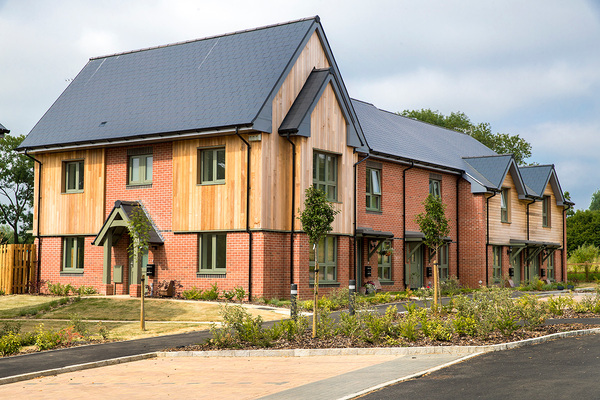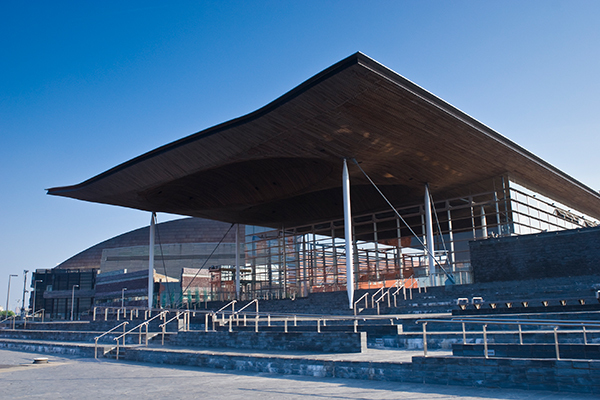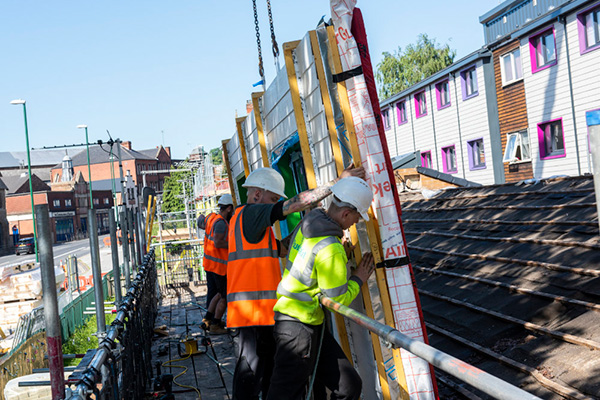You are viewing 1 of your 1 free articles
Will Rishi Sunak’s funding announcements help social landlords decarbonise their homes?
As the government plans a “green recovery” from the coronavirus crisis, Lucie Heath explores whether the latest energy efficiency policy for housing will help social landlords meet decarbonisation targets. Picture by Getty and Press Association
Taking to the despatch box earlier this month, chancellor Rishi Sunak set out his vision for a “green recovery” from the economic slump caused by coronavirus.
Retrofitting homes plays an important role in the government’s job creation strategy – in the form of a £2bn Green Homes Grant for owner-occupiers and landlords to improve their homes’ energy efficiency, and a £50m decarbonisation fund for social housing.
Inside Housing has taken a closer look at the proposals and how far they will go in helping the housing sector meet its stretching energy efficiency targets.
While the government is yet to release guidance for the Social Housing Decarbonisation Fund, a few things are already apparent. First, the £50m is going to be spent quickly. Documents accompanying Mr Sunak’s speech confirm that the money is for this financial year, of which there are only eight months left.
Second, the money appears to be a precursor to a £3.8bn, 10-year Social Housing Decarbonisation Fund promised in the Conservative Party’s election manifesto. The costing document for the manifesto said that this fund would begin with a £60m investment in 2021/22, although the Treasury did not respond to Inside Housing when asked if it still intends to follow this timetable.
According to the National Housing Federation (NHF), the fund will follow the same model as the former Whole House Retrofit competition, which was run by the Department for Business, Energy and Industrial Strategy in 2019.
The competition awarded projects that demonstrated an affordable approach to retrofitting.
The announcement has been met with some optimism in the sector. Speaking at the time Clare Miller, chief executive of Clarion Housing Group, said the £50m will allow landlords to “look at some solutions that would have otherwise taken us much longer to get to”.
However, it is clear that £50m is a mere drop in the ocean compared to the decarbonisation bill landlords are facing if they are to meet the UK government’s target of achieving EPC Rating C on all homes by 2035 and net zero by 2050.
The 7,000-home landlord Raven Housing Trust estimated that it will cost £20,000 per home to retrofit its stock, bringing its total bill to £115m.
Richard Lupo, managing director at Suss Housing, which runs the SHIFT index that assesses landlords on sustainability, tells Inside Housing that the government’s £50m fund would be enough to decarbonise one medium-sized landlord. “Given that there are about 1,300 social landlords in the country and the equivalent number of local authorities with housing, you start to see the scale of the problem,” he adds.
It is not just the size of the Social Housing Decarbonisation Fund that has left some in the sector feeling underwhelmed. Mr Sunak’s announcements conjure up memories of past failed government initiatives.
The chancellor’s Green Homes Grant voucher scheme appears to share similarities with the Green Deal, which was introduced by David Cameron’s government in 2012. The idea of the scheme was that energy efficiency improvements would be funded upfront by the private sector and paid back by owners in instalments via their electricity bills.
The Green Deal aimed to improve the energy efficiency of 14 million homes. By the time the scheme was brought to an end in 2015, just 14,000 households had applied.
In general, the Green Deal was criticised for being overly complicated and leading to poor quality work. The All-Party Parliamentary Group for Excellence in the Built Environment urged the government in 2013 to reconfigure the scheme to better suit social housing providers. It argued that housing associations could play a key role in expanding the scheme, however the overly bureaucratic process combined with a poor return on investment meant many social landlords failed to participate.
The government has yet to confirm whether social landlords will be able to apply for funding via the Green Homes Grant, or whether the decarbonisation fund will instead be the sole funding stream for the sector. Either way, housing associations and councils will be hoping that lessons have been learned about failing to consult properly with them over initiatives.
In addition to the Green Deal, the sector has previously been offered various funding opportunities through schemes such as the Domestic Renewable Heat Incentive, which provides payments to landlords and owner-occupiers who install low-carbon heat systems in their properties.
But funding for sustainability measures has often been short term and piecemeal. “I think one of the concerns that we hear from members is that it’s quite confusing to navigate the different things that exist and also navigate different departments that have different responsibilities,” says Rob Wall, head of policy at the NHF.
Nicholas Doyle, who led on sustainability policy at Places for People before launching the consultancy Adecoe in 2014, says the problem with the short-term nature of government funding is that it can create peaks in the cost of certain technologies and leads to landlords chasing “false deadlines” in order to meet funding targets.
With that in mind, how should this £50m be spent to avoid the mistakes of the past?
While it is likely that at least some of the funding will be spent on exemplar pilot schemes, many in the sector have grown weary of this approach.
“We need to start moving beyond pilots and start moving more quickly towards our end goal,” says Mr Wall. He says he understands landlords have concerns about installing technology that could end up having to be removed in 10 years’ time but adds that there are “low-hanging fruits”, including traditional insulation, that associations could be getting started with today.
Mr Lupo agrees: “If you’re going to start decarbonising, the best thing to do, or the no-regret thing to do, is work on fabric improvements, like insulating roofs, floors and walls.”
Instead of focusing on new technologies, Mr Doyle would like to see some of the fund being used to develop a finance mechanism that will help the sector to decarbonise at scale.
“There’s no more to be done in terms of innovation,” he says. “We don’t need more trial projects in the way that we’ve done them in the past… What’s really needed is the development of long-term financing mechanisms to make this a sustainable source of funding to deliver zero carbon, because no amount of government funding is ever going to deliver the amount of money that’s needed.”
He adds: “It’s the classic thing of don’t give us the fish, give us the means for fishing.”
One funding mechanism idea repeatedly raised with Inside Housing is the creation of a rent policy that would allow landlords to charge more for homes where it has successfully reduced energy bills.
Mr Lupo says the Treasury could “really help themselves” with such a scheme, which would be of little initial cost to government.
Nicholas Harris, chief executive of Stonewater, also supports the idea, and recalls a similar policy being used to incentivise the installation of gas central heating when he joined the sector as a trainee.
In addition to developing finance models, there is more the sector can do now as it waits for detail on the government’s grant programme. For example, Mr Lupo believes that social landlords should only be building homes that are EPC Rating A. He says this will reduce retrofitting costs as it will make it easier for landlords to achieve an average of net zero within their stock.
Meanwhile, Mr Wall would like to see more collaboration across the sector. “There’s lots of great practice taking place across the country, but I’m not sure we’re sharing that particularly well,” he says. “We’re probably reinventing the wheel left, right and centre.”
This conversation comes at a difficult time for social landlords, who are facing competing demands on their balance sheets including the development of new homes, fire safety costs and the coronavirus crisis.
However, previous policy failures demonstrate that the government cannot always be relied on to provide a stable route map to net zero. Landlords that continue to wait for funding announcements while meeting the minimum standards required may find themselves bearing the cost further down the line.
Sign up for our daily newsletter
Already have an account? Click here to manage your newsletters















